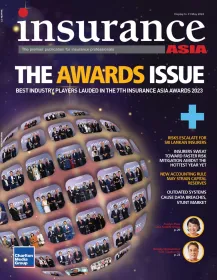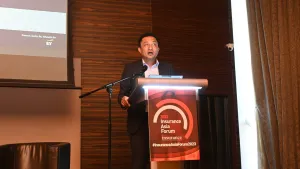
Recent regulatory changes to boost Taiwan’s life insurance sector: Fitch Ratings
New measures extend the adjustment period for insurers to adapt product and investment strategies to meet capital requirements by 2026.
The recent adjustments and transitional measures for interest-rate risk by the Taiwanese regulator are expected to alleviate negative spread pressure on life insurers and assist them in managing asset-liability duration gaps under the localised Insurance Capital Standards (TW-ICS) and IFRS 17, according to Fitch Ratings.
The new measures provide the industry with additional time to adapt product and investment strategies to meet the more stringent capital requirements under the new standards, set to be implemented in 2026.
Fitch anticipates that these adjustments will reduce the urgency for insurers to raise debt or equity to replenish capital, following the earlier transitional measures for asset risks announced in July 2023.
The Financial Supervisory Commission (FSC) introduced three measures on 23 November, to facilitate insurers' transition to the new solvency framework over a 15-year phase-in period:
A 50 basis points (bps) illiquidity premium for liability discount rates on legacy insurance policies with guarantee rates above 6%. A linear rise in target capital requirements for interest-rate risk from 50% to 100%.
Allowing the phasing in of net fair value impacts from assets and liabilities within the period.
The illiquidity premium in liability discount rates benefits the valuation of policies sold before 2004 with guaranteed yields above 6%. This measure is expected to relieve reserve pressure on life insurers' mark-to-market insurance liability valuation under the new solvency standard and comply with IFRS 17.
Given Taiwan's current policy rate of 1.88%, many life insurers face negative spread burdens, particularly those with long operating histories and sizable legacy books.
ALSO READ: Taiwan’s FSC approves 197 spillover-effect insurance products from 13 insurers
Interest-rate risk is identified as a key challenge for life insurers, with the more stringent requirement expected to result in interest-rate-related capital charges three to four times higher than the current regime, particularly for major insurers that sold savings-type products with high guaranteed yields in the past.
The regulator's decision to allow a gradual increase in interest-rate risk provisions from 50% to 100% over 15 years offers life insurers the necessary time to adjust and replenish their equity bases.
The relaxation in recognizing net fair value impact on capital helps insurers maintain a lower level of solvency sensitivity and eases immediate capital needs driven by interest-rate movements.
However, the adoption of IFRS 17 and tighter capital rules in 2026 will accentuate insurers' asset and liability mismatches, putting greater pressure on their capitalization.
The FSC announced on 30 November that life insurance liability reserve interest rates for foreign-currency new business in 2024 will increase, except for new policies denominated in Chinese yuan. For US dollar-denominated policies, interest rates will rise by 75bp for policies with a liability duration of less than 6 years, 50bp for 6 to 20 years, and 25bp for longer than 20 years.
Fitch believes that stronger asset-liability management, a shift in business mix towards profitable protection-type products, and a cautious investment strategy with proactive foreign-currency risk management will contribute to life insurers' stable surplus growth.
The life insurance industry's profit before tax fell by 38.4% YoY in 10M23, and Fitch expects life insurers to enhance capital adequacy through debt issuance or equity injections in the coming years, considering continued financial-market volatility.











 Advertise
Advertise












